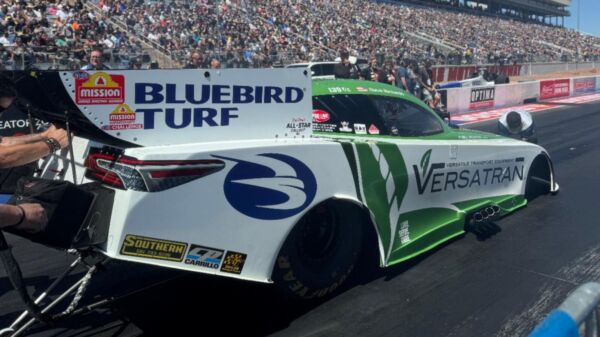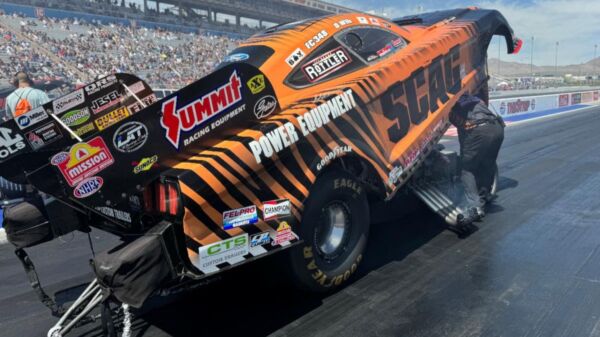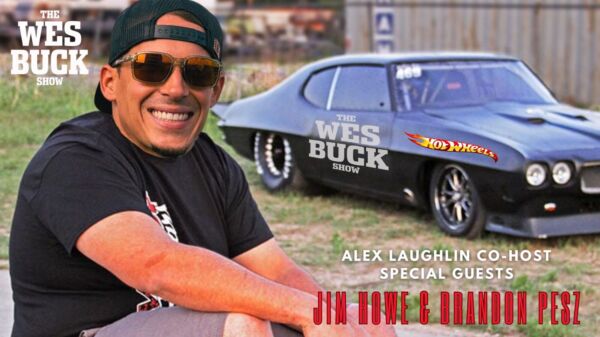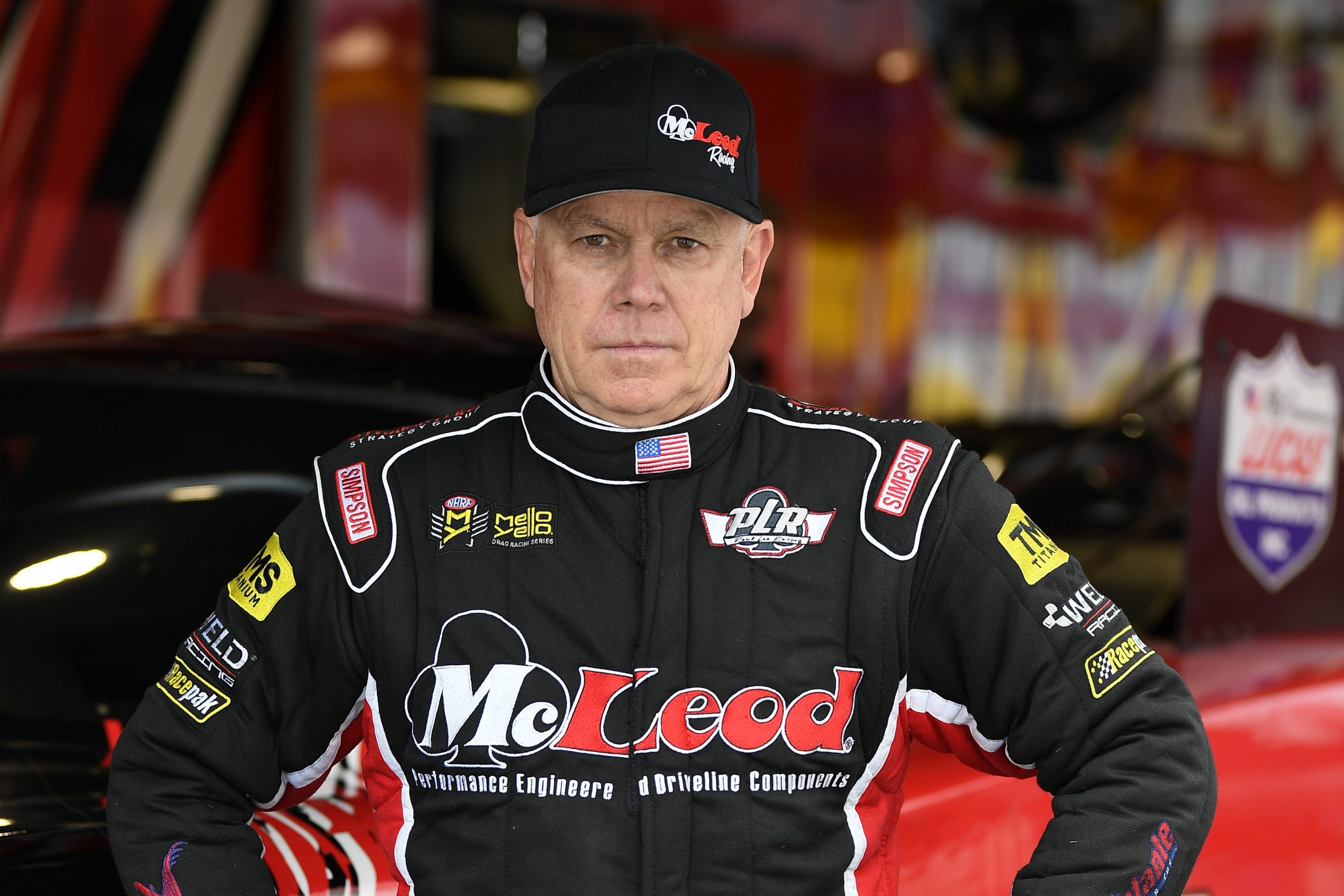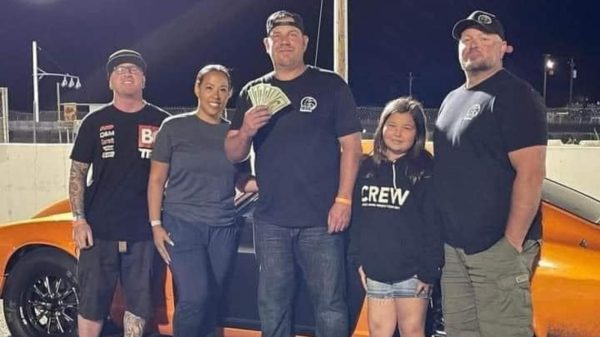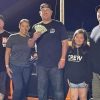Paul Lee’s story is about racing. But it’s also about friends and family, and maybe most importantly, perseverance.
Lee had just enjoyed a strong finish to his 2016 Funny Car season, joining Kalitta Motorsports and running a career-best 3.935-seconds at 329.34 mph. But he suffered what’s known as a “widow maker” heart attack in the offseason, a dire name because of its 10 percent survival rate. Lee miraculously recovered and then upped the ante one more, returning to racing in 2019 with crew chief Jim Oberhofer as part of his “Comeback Tour.”
[Editor’s Note: This story originally appeared in DI #157, the Interview Issue, in June of 2020.]
The heart attack didn’t dramatically change his outlook on life, mostly because he’s remained the same enthusiastic, upbeat, smile-on-his-face racer.
But Lee has appreciated things more since suffering the heart attack that nearly took his life. It’s why friends and family are always welcome in his pit, no matter how things may have gone on that particular raceday.
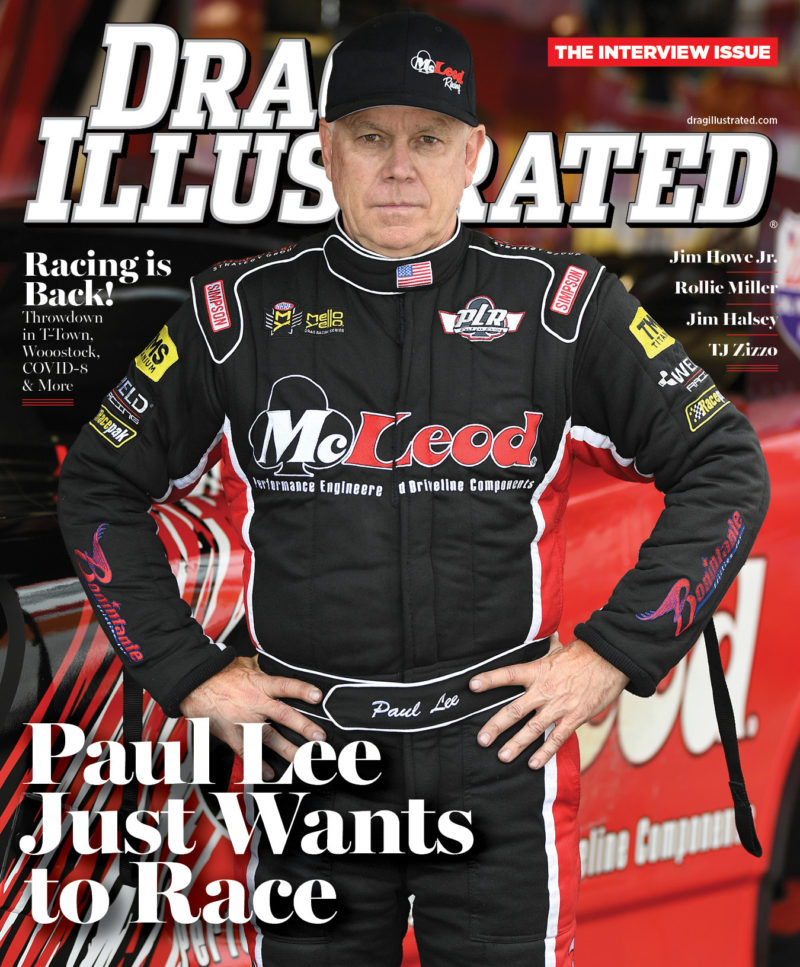 “It’s not just Paul Lee’s race team. It says on the back of my trailer Paul Lee’s friends and family nitro Funny Car,” Lee says. “We race as a family race team. I think that’s the most important thing that gives me the greatest happiness is to be able to see all my friends and family at the racetrack.”
“It’s not just Paul Lee’s race team. It says on the back of my trailer Paul Lee’s friends and family nitro Funny Car,” Lee says. “We race as a family race team. I think that’s the most important thing that gives me the greatest happiness is to be able to see all my friends and family at the racetrack.”
With Global Electronic Technology backing Lee’s 11,000-horsepower Toyota Camry in 2020, he posted career-bests to open the year, including a 3.898 in Phoenix and 332.92 mph in Pomona. It had Lee charged up to win his first career Funny Car race when the racing world was turned on its head with the ongoing COVID-19 public health crisis.
Lee chalked it up as another challenge, poised to be ready when NHRA racing resumes in July.
He talked with Drag Illustrated about the moment that changed his life, his incredible return to recovery and the arduous road he endured, how much friends and family meant to him in this journey and what a Funny Car win would mean.
The last few months with the pandemic, it’s obviously been a lot to digest as a racer and a business owner. How are things for you in both regards?
We’re ready to go. The guys are back to work getting the car ready to go racing in July. We’ve been ready to race and we’ll be ready.
As far as our business, McLeod Racing and FTI Performance, we haven’t slowed down one bit, which is great news. Our sales have been through the roof the whole time, which is pretty amazing. I’m even surprised at that, but people have been stuck at home and need something to do, so they’ve been working on their projects, whether it’s a hot rod project or a custom car rebuild, or even working on their race car getting it ready for when we do race. All the hardcore racers have been at it, getting ready for race season, which we’re pretty blessed and fortunate that that’s the case.
We were prepared for the worst, but we were pleasantly surprised. It was very nice to see that we didn’t have to lay anybody off. We didn’t have to furlough anyone.
What’s your takeaway on what the schedule looks like for the rest of the 2020 NHRA season?
Well, I mean, there’s pros and cons to it. The two-day racing I think is a good idea. It makes it more affordable when you’re making two less runs and plus one less day of hotel rooms, all that kind of thing. It’s good for a team, in my opinion, but a lot of the sponsors and marketing partners don’t necessarily like it because they’re looking at it as they have one less day of activation for their sponsor. The good thing is we have good partners and they’re working with us to get ready to go race.
Another one of the negatives that I’m not real crazy about is, of course, NHRA is cutting the purse. You’re trying to save a little bit of money, but then again, they’re taking it away, so at the end of the day, it’s going to be a wash.
So there’s pros and cons. I guess for the betterment of the sport, we need to start somewhere, so let’s get going and get racing again so we can get back to some kind of normalcy.

Obviously, the ordeals that you went through health-wise is a big part of your story, and just an incredible story worth retelling over and over again. Can you give us a glimpse of what you went through with your heart attack and the road to recovery from it?
In 2016, we had a great season. We were all excited about running a lot of races, possibly full-time in 2017. The day after I got home from PRI (late in 2016), where we had sponsor meetings and announcing a few things for 2017, all of a sudden I had a widow maker heart attack, which is basically 100 percent heart failure. It was totally unexpected. I mean, I had no sign of it. Like I said, I was just at the PRI show. I spent four days there and felt great. Didn’t have any loss of energy or anything. I work out. I exercise. I’ve always exercised. I’ve always eaten right. I never smoked. I don’t do drugs. I was pretty healthy. I considered myself pretty healthy, and then to come home and have a massive 100 percent heart failure was pretty shocking.
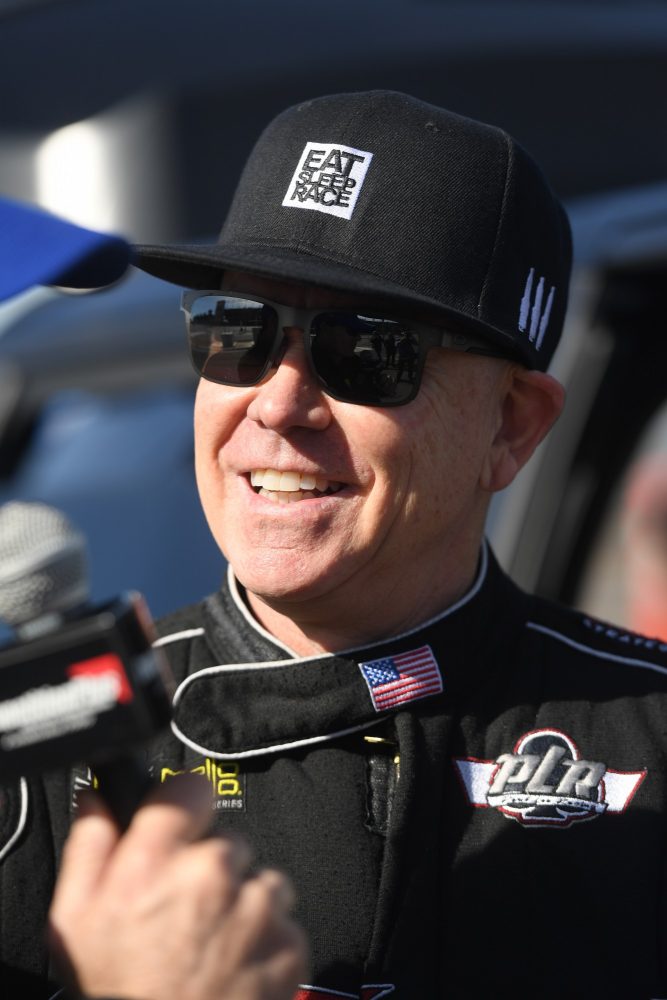 At first, I didn’t know I had a heart attack. I thought I had some heartburn, and gradually, within a minute, I could feel the massive pain in my chest, like there was an elephant sitting on my chest. I told my girlfriend at the time to call 911. I thought I was having a heart attack. I mean, I could feel it myself. I was kind of in denial, because I thought I was pretty healthy. I never had any kind of sign of having any kind of heart trouble before.
At first, I didn’t know I had a heart attack. I thought I had some heartburn, and gradually, within a minute, I could feel the massive pain in my chest, like there was an elephant sitting on my chest. I told my girlfriend at the time to call 911. I thought I was having a heart attack. I mean, I could feel it myself. I was kind of in denial, because I thought I was pretty healthy. I never had any kind of sign of having any kind of heart trouble before.
She called 911, and there was a couple of things that I was lucky to survive this. When you have 100 percent heart failure, there’s less than 10 percent who survive. The luckiest thing was I live right across the street from the EMT center. When she dialed 911, the EMT was at my house within four minutes.
I needed that because within four or five minutes, I was literally out, passed out almost. I couldn’t react. I lost vision, my arms were numb. I couldn’t move. I was nauseous. I couldn’t stand up. I was basically passing out. My body was literally shutting down because my heart had stopped. It wasn’t a little heart attack. It was total heart failure. My heart had stopped. If it wasn’t for the EMTs getting there that fast and getting me stabilized, I wouldn’t have made it.
They got me to the hospital and the emergency room within 20 minutes, and they kept me alive until they got me there. I went right into the emergency room. The one thing that really sticks out in my mind is the whole ride to the hospital, the EMTs were talking to me, but I couldn’t respond to them because my body was shut down. I couldn’t talk. I couldn’t see. I couldn’t move my arms or anything, but I could hear everything that they were saying. Then when I got into the emergency room, I could hear the doctor say, “OK, Mr. Lee, you had heart failure. We’re going to go through your groin.”
They went in through the groin and opened up the artery that was 100 percent clogged, which is the LED, the main artery. That’s the widow maker artery, which is your main artery through your heart. It was 100 percent clogged.
They opened it up with stents. They got me breathing again and got my heart going again, and they saved my life, basically. I was in the hospital for over a week, but I remember having chest pains for a couple of weeks after that. It turned out I had permanent damage to my heart.
And racing was certainly the furthest thing from your mind at that point. Did you find out what contributed to it?
I didn’t think about racing then. I was just lucky to be alive. I was blessed just to still be here. Of course, the racing for 2017 obviously got canceled. The doctor’s telling me, “You have permanent damage to your heart. Your injection fraction, which is your efficiency of your heart is under 30.” A normal heart is in the 70 range and mine was under 30, which put me at high risk for another heart attack.
It turned out that my grandfather died of a heart attack and so did his two brothers, so I had hereditary heart disease.
One of the great regrets that I have is I didn’t go have a stress test. The stress test would have shown I had a clogged artery and we could have fixed it before I had a heart attack. But me being stubborn and being healthy, and feeling fine, I didn’t see any reason for me to go have a stress test. Now, I think anyone over 50 should have one, whether you have hereditary heart disease in your family or not. I had heart disease and didn’t know it, basically.
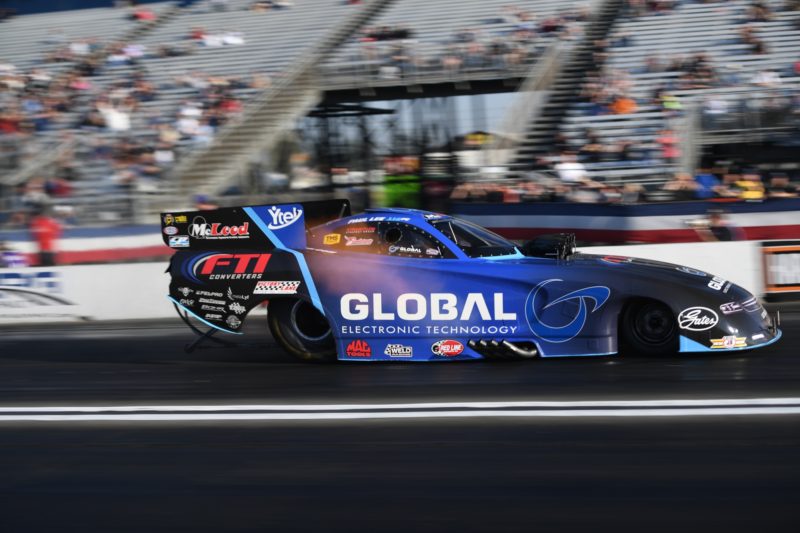
I heard your trials that day described as almost an out-of-body experience. Is that what it felt like as you when through it?
It was more like I now knew when you die gradually, your brain is the last thing that goes because I lived it. I mean, like I said, I couldn’t speak. I couldn’t even see. I even lost my vision, which my body was shutting down. I couldn’t move. But the one thing I could still do, my brain was still perfectly clear. I could still hear everything that was going on around me and I could hear everybody talking to me. I just couldn’t respond to them.
I was just thinking of all the things that I wish I would have done if I died and I didn’t do. I wish I would have told people that I loved them, my family and my friends, and I was like, man, I wish I’d get one more chance to tell these people that I love them. I prayed that, “I’m not ready to go. Just let me have another chance, another shot at this…” I just remember that going through my brain.
So as you’re going through the healing process, did any aspect of your mindset or priorities shift, or even the way you live your life?
I changed a lot of the thinking, a lot of the things I do. My friends, I don’t care if they’re a man or woman, I tell them I love them.
I just feel blessed for every day that I wake up and have another day. I just try and make the most of it every single day. I’ve always been competitive, whether it’s racing or business, so that really hasn’t changed. I still have the drive to better my business and better my racing, too. That’s my life. I live my passion in both racing and business. I love what I do, and I’m just lucky and blessed that I’m still here to enjoy that.
At some point racing again enters the equation. I know you were content not racing again, especially if that kept you alive, but once that was an option, how did it become reality for you?
I never expected to be racing again, and I was OK with it. Mentally, I was fine. I’m lucky to be alive, forget about racing. It didn’t really bother me that much.
I went on with my life and went back to business, and I tried to take it easy. The doctor said stress is not a good thing for your heart, so things were going along good. 2018 comes and the whole time I’m rehabbing my heart. I was going to rehab a couple times a week, and I have my own exercise program, which includes cardio work on the Lifecycle, lifting free weights, eating healthy, which I’ve always done anyway, so I didn’t have a problem with that.
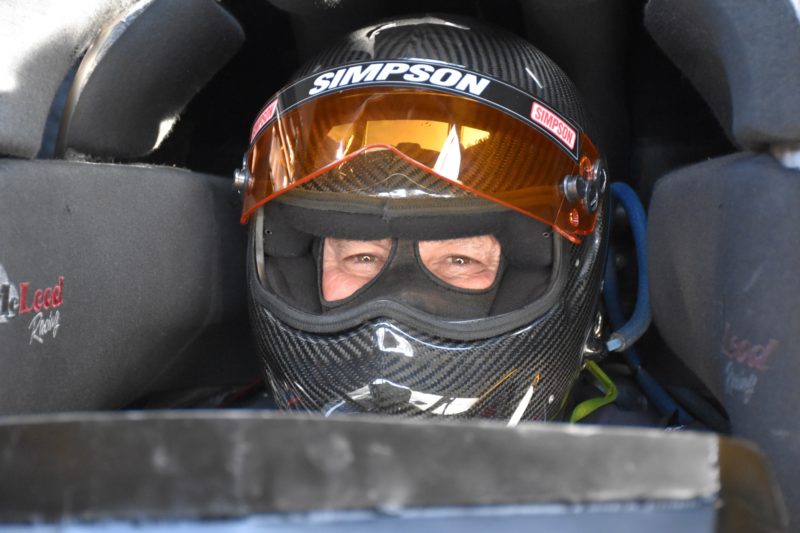 I just kept doing that, and every three or four months they would do another stress test on me to check the efficiency of my heart. The efficiency of a healthy heart is 70 percent and mine was under 30 percent after my heart attack, which is really low. I just kept working on it, not necessarily to come back racing, just to stay alive. They put a defibrillator in my chest to help me if I had another heart attack, because I was high risk for another heart attack. I just kept working at it really hard because that’s just my philosophy. I’ve always been a hard worker, so if I’m going to do it, I’m going to do it all the way.
I just kept doing that, and every three or four months they would do another stress test on me to check the efficiency of my heart. The efficiency of a healthy heart is 70 percent and mine was under 30 percent after my heart attack, which is really low. I just kept working on it, not necessarily to come back racing, just to stay alive. They put a defibrillator in my chest to help me if I had another heart attack, because I was high risk for another heart attack. I just kept working at it really hard because that’s just my philosophy. I’ve always been a hard worker, so if I’m going to do it, I’m going to do it all the way.
All of a sudden, my cardiologist says, “You know, your rehab’s really working out really well.” He says, “Your heart efficiency number is kind of jumping up here. It’s up to 40-45 percent.” He asked how I felt, and I said, “I feel normal, to be honest with you.” I said to him, “Do you think I could race?” And he goes, “Yeah, I don’t see why not.” He just thinks I have this regular car, right?
So I said, “Before you give me permission to do that, I think you’ll want to come out to the races to see what you’re really approving me to do.” He said he would love to come see it, so in November the [NHRA] World Finals [in Pomona] were coming up. I said, “Why don’t you come with me for the day, and I’ll show you what these race cars do and see if you think I can do this again.”
He agreed and I brought my cardiologist to Pomona and got him in the pits. I wanted to show him what a nitro Funny Car really is about and Del [Worsham] was nice enough to give me free rein of his pit. I showed the doctor and, of course, he’s still not impressed yet.
Then Del warmed up the car and [the doctor’s] eyes got real big like silver dollars. He’s like, “Wow. This is crazy.” I go, “Well, you haven’t seen anything yet.”
We took him out on the starting line for the first round of eliminations and the first run, he just was totally blown away. He never knew that anything like this on the planet existed. He thought it was incredible.
But then he turns to me and goes, “We’re going to have to rethink this driving thing. We’re going to have to do some more planning before this.” He was completely blown away by it. He had never seen anything like that in his life.

Seeing the Funny Cars run just brought up a new list of concerns, I’m sure. How did you get him convinced it was OK for you to race?
He had a couple concerns, obviously, after seeing the cars in person. One of them, after looking at Del’s car, is magnetos, because I had a pacemaker defibrillator in my chest. He goes, “These things could interfere with that,” the two 44-amp magnetos.
He asked me if I could get in the car with it running, idling, so he could measure the effects on my defibrillator.
Del agreed to let me sit in the car and we warmed it up. The doctors are there, the cardiologist and the defibrillator doctor were there monitoring my defibrillator remotely on a laptop to see if there was any interference of the magnetos.
We started it up, and they were monitoring my defibrillator with the laptop. We did a regular warmup with the car. It was running for about two minutes. We shut it off and it was fine with no interference whatsoever. That was the first test to pass.
Now the next thing he says, “Can we get you in a car and actually make a run?” They would hook me up to a heart monitor. Connie (Kalitta) let me drive J.R. Todd’s DHL car at the Phoenix test session [in early 2019], and Kenny’s Components in North Carolina built me a carbon fiber chest protector that covered up my defibrillator. I hadn’t driven in a year and a half, so I got in the car and made the first planned run, 330 feet. That went well. Of course, I was anxious about it because I didn’t know how my heart was going to hold up. Well, my heart rate went up to about 145, 150 according to the monitor, but everything went well. I pulled the ‘chutes just to pull them, just to see how it felt on my chest. It all checked out fine, so the next run we went to half-track, and did really well. Everything felt fine, so they said, “OK, well, this last run, just go as far as it feels good.” On the third run, I went the fastest time I ever went. I went 3.90 flat at over 320 mph and pulled the ‘chutes. Everything felt good.
And they cleared me. When you have a heart attack, your cardiologist has to sign you off for your license, not necessarily NHRA. It’s the cardiologist. It’s up to him. So now I have permission to go back racing again.
It had it be just a surreal moment for you. So, how do you go from that to putting the pieces back together to have a team and go racing again?

Jim Oberhofer
It felt great. I never thought that I’d be back racing again, and it just felt like wow, it’s like I can actually do this again. All the hard work paid off. Then it was like, OK, now I’ve got to put a team together.
At that point, Jim Oberhofer, who is a good friend of mine, he left Kalitta Motorsports, so I got him together. I said, “Jim O, let’s put together a team and let’s go race.” We went to Don Schumacher [Racing] and we talked to Don, and Don said, “You know what? Whatever you guys need, I’ll take care of it. I’ll sell you guys anything you need.” I ended up buying everything I own from Don Schumacher Racing, and I even rent space in his shop. I bought the truck, the trailer, the cars, three bodies, all the parts and pieces, and Don was extremely great to me. If it wasn’t for Don, I wouldn’t have been able to come back like I did this strong.
It’s truly fascinating to hear this. Now that you’re back, it’s like you’ve got a smile on your face the whole time. How incredible does all of this feel?
I have a smile on my face every time I wake up in the morning, to be honest with you, and I’m blessed to even be granted another day on this earth as I make the best of it. The racing is just icing on the cake.
When I was not racing that whole time, I never really got depressed. I just was always motivated to get back. But the one thing that was sad about it was I never got to see my friends because I didn’t go to a lot of the races, so I never saw anybody.
Now that I’m racing and back out there, what I love most about racing, yes, I love driving a 330-mph car, which is an awesome experience in itself, but the best part about drag racing, and this basically is another philosophy that I’ve got with my own team, is this is my friends and family race team. There’s no one that’s not welcome in my pit that’s not a friend or family.
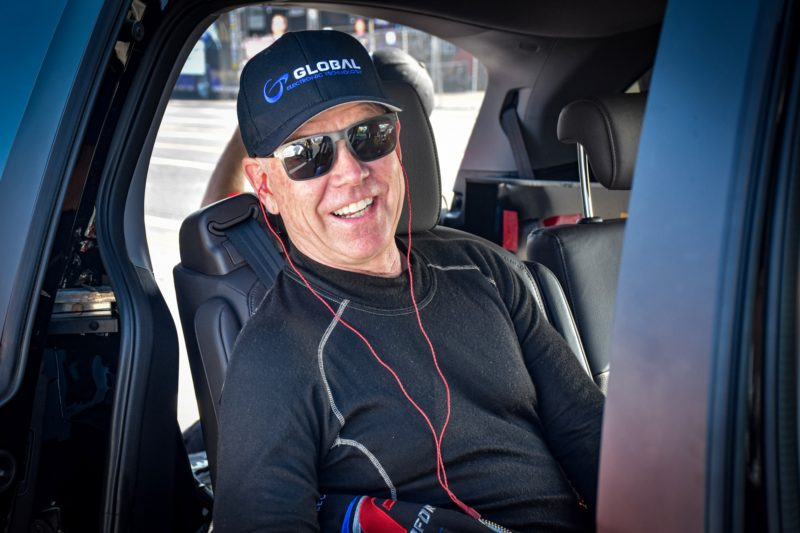
At the same time, you’re as competitive as anyone out there. This isn’t just a way to go out there and pass the time, is it?
I don’t do it halfway. We go to race. We go to win. We go to race. We go to make four qualifying runs. We go to make every run. We’re there to race. We’re serious. We’re having fun, but we’re also there to win. We’re not there just to show up and qualify. We’re there to go rounds.
After all you’ve been through and coupled with the improvements this team has made, what would that first Funny Car win mean to you?
I tell you, it’d mean a lot. That’s what we’re striving for. It’ll be a great feeling when hopefully I get to hold that Wally because that’s what it’s all about. It’s all about the competitiveness and the good feeling of a great job well done by a team. There’s nothing I’d like better than to share a Wally with all my friends and family and teammates in the winner’s circle.
That’s our goal. When you see us at the racetrack, that’s exactly what’s on our mind. You’ll never have to know. People say, “What’s on your mind?” What’s on our mind is winning a race.
Photographs by Auto Imagery and Courtney Enders
This story was originally published on July 16, 2020. 

